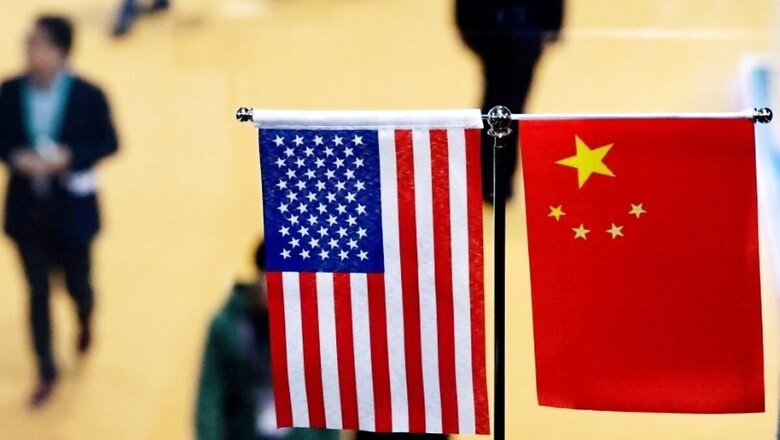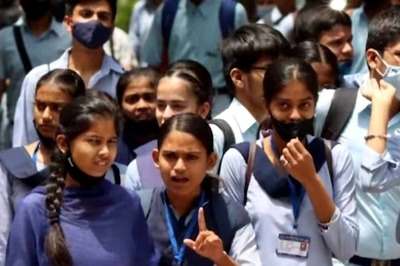
views
The spread of the COVID-19 pandemic across the globe gave some rays of hope for the emergence of a more close-knit international order, wherein countries cooperate against a common enemy — in this case a fast-spreading pandemic. However, the rays of hope were covered by clouds of a self-centered and competitive international order, as countries actively became more inward looking and conflicts across several lines increased in the system.
China became the centre of myriads of conflicts with several countries ranging from the Philippines to Malaysia to Vietnam to India to the US. Escalation between the US and China has heightened to the extent that the US asked the Chinese Consulate in Houston to close. This comes at a time when China and the US have been at loggerheads over everything ranging from trade to 5G networks.
Amidst these deteriorating situations, a number of plausible reasons have been mentioned in IR scholarship to understand why the escalation is taking place at this particular juncture in international relations. These include electoral needs for US President Donald Trump to display to an audience going to vote in November this year, that an America under him is not soft, weak or accommodative to American rivals; the Thucydides Trap over a belated war; and the possibilities of a return to bipolarity on the lines of what was witnessed during the Cold War.
The first line of reasoning behind the heightened levels of conflict is that the US will have its presidential elections in November this year, and it makes sense for the Tump administration to make a scapegoat out of China to symbolise American toughness. While this could be an important reason, closer inspection of Chinese considerations for becoming aggressive is warranted.
Trouble at home?
The Chinese leadership faces severe criticism of the way it handled the onset of the COVID-19 crisis, and the ways in which doctors including Dr. Li Wenliang were silenced. Additionally, the second round of the COVID-19 in Beijing, which emerged in June this year, has dealt the state’s narrative of having successfully controlled COVID-19, a severe blow.
Xi Jinping might have removed the term limits for top posts including his own, but many senior CCP cadres, officials, academics, students, intellectuals and others have gone to the extent of risking punishment to criticise Xi Jinping on social media. Intellectuals and professors such as Xu Zhongrun, Xu Zhiyong, Zhang Xuezhong and Yu Linqi have demanded on WeChat that Xi Jinping step down. On 22 March, on Weibo, “princelings” or the children of high-level veteran CCP cadres called for an emergency meeting of the CCP’S Politburo to discuss Xi Jining’s replacement.
On 23 March, Ren Zhiqiang, a Chinese realty tycoon wrote an opinion piece, in which he called Xi a “clown” who insisted on wearing the Emperor’s new clothes. Clearly, not all is well for Xi. In addition to these are concerns of unemployment, inflation, slow growth, falling levels of investment among a long list of others.
Hence, these criticisms of the ruling class may also be seen as factor, with the US becoming a rallying point for the domestic audience, by displaying the Chinese state’s might against the ruling hegemon of the world order.
Return to the past?
The second possible rationale for heightened tensions is that of the Thucydides Trap. Explained in the context of relations between Athens and Sparta in ancient Greece, it posits that when a rapidly rising power threatens an established power, competition inevitably leads to a conflict. The rise of Athens and the fear it instilled in Sparta made war inevitable. The past 500 years have seen 16 cases in which a rising power threatened to displace a ruling one. Twelve of these ended in war. The question that rises here is can China’s challenge to the US be a prophetic case of the Thucydides Trap?
Undoubtedly the US is still the most powerful country in the international system, given its military as well as power projection capabilities. Whereas, China, moving away from Deng Xioaping’s guideline of ‘hide your capabilities and bide your time’ has clearly moved to position itself as a leader, as is evident from Xi Jinping’s speech at the 19th Party Congress, wherein he stated that by 2020 China would emerge as a modern and prosperous nation, and he went on to suggest that other developing countries could adopt the same growth model to transform the lives of their people. Xi also unveiled his two-stage plan to make China a great modern socialist country and said that the world’s second largest economy had entered a “new era” where it should “take centre stage in the world.” But this in no way means that this ‘trap’ has emerged.
Even in 1950, a feeble People’s Republic of China (PRC) that had just come into existence in 1949 after decades of Civil War, went for the Korean War, and in support of the communist North Korea, (which in turn was backed by the Soviet Union), retaliated against American, South Korean and UN forces. The conflict lasted for three whole years and thus the then-newly created PRC stood ground against the formidable US in 1950. Even before 1950, the Chinese Communist Party (CCP) found itself at odds with the US — which backed the Nationalists or the Kuomintang (KMT) against invading Japanese forces during the Second World War. The US continued backing the Chiang-Kai-shek led KMT which during the Civil War with the CCP was exiled to Taiwan — and this set the stage for several decades of limited US relations with the PRC. Clearly, China’s challenge to US hegemony in the 21st century cannot be seen through the prism of the Thucydides Trap alone, since China has been challenging the US long before it became a ‘rising power’.
The possibility of war between the US and China is not something that is exclusive to events today. During the first Taiwan Straits Crisis in 1954, Washington had signed a mutual defence treaty with Chiang’s KMT and in the spring of 1955, the US had even threatened a nuclear attack on China. In addition, during the Third Taiwan Straits Crisis in 1996, the US government had responded to Chinese aggression in the Straits by displaying American military might, which was the biggest in Asia since the Vietnam War; and President Clinton ordered additional ships to the region. Hence, the possibility of full-blown military conflicts between the US and China has persisted for a long time.
New Cold War?
The third line of reasoning for increasing tensions is that the two great powers of the system are ideologically different with contrasting governance models.
As a result of this, the post COVID-19 world order is imagined to be one of bipolarity between the US and China. The only difference will be that instead of the Soviet Union, the second pole will be China. However, this view ignores the emergence of other important powers in the international system such as Russia, Brazil, Japan and India. Even though these countries might not be militarily strong to compete with the US or China, fact remains that these countries also play important roles in the international system.
Also, as fierce as the trade war between the US and China may be, economic interdependence in the 21st century is much more important than it hitherto was. Mere ideologies do not divide the US and China, and grounds for cooperation despite all tensions continue to remain. Thus, a bipolar Cold War-type system is out of question.
What all of this means for the future of US-China relations is that this uneasiness and constantly escalating mutual aggression is to continue in the near future as it has existed in the past. For the international system, tougher times are going to emerge as fallouts of escalation between two great powers will engulf other states.
Given the confluence of factors, it makes perfect sense for both countries’ leadership to up the ante against the other, and due to rising aggression and a more inward-looking international system, possibilities of cooperation and mutually beneficial outcomes are set to diminish.
This article first appeared in ORF.
















Comments
0 comment